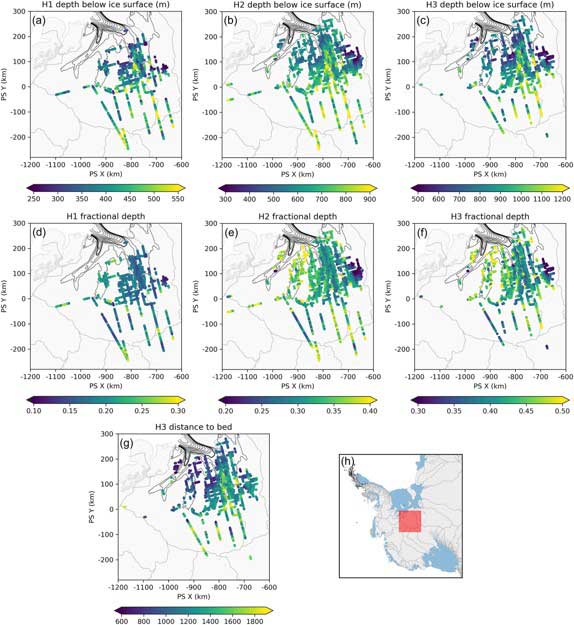A new paper, stimulated by the AntArchitecture group, has been published in Geophysical Research Letters.
Ice‐penetrating radar is widely used to measure the thickness of ice sheets, critical to assessments of global sea level rise potential. This technique also captures reflections from chemical contrasts within the ice sheet, caused by the atmospheric deposition of conductive impurities, known as “internal reflection horizons” (IRHs) that can be traced over large distances. As these deposits are laid down in distinct events, most IRHs are isochronous age tracers and contain valuable information on past ice sheet processes. In this paper we trace and place age constraints on stratigraphic horizons across a large portion of the West Antarctic Ice Sheet, including regions where fast ice flow has disrupted the ice sheet stratigraphy. The resulting data set allows us to identify where the oldest ice is buried in the study region and provides evidence that flow of the ice sheet interior has been stable during the Holocene. Our results can be used to test the performance of ice sheet models, which seek to simulate the response of ice sheets to long‐term environmental change.

